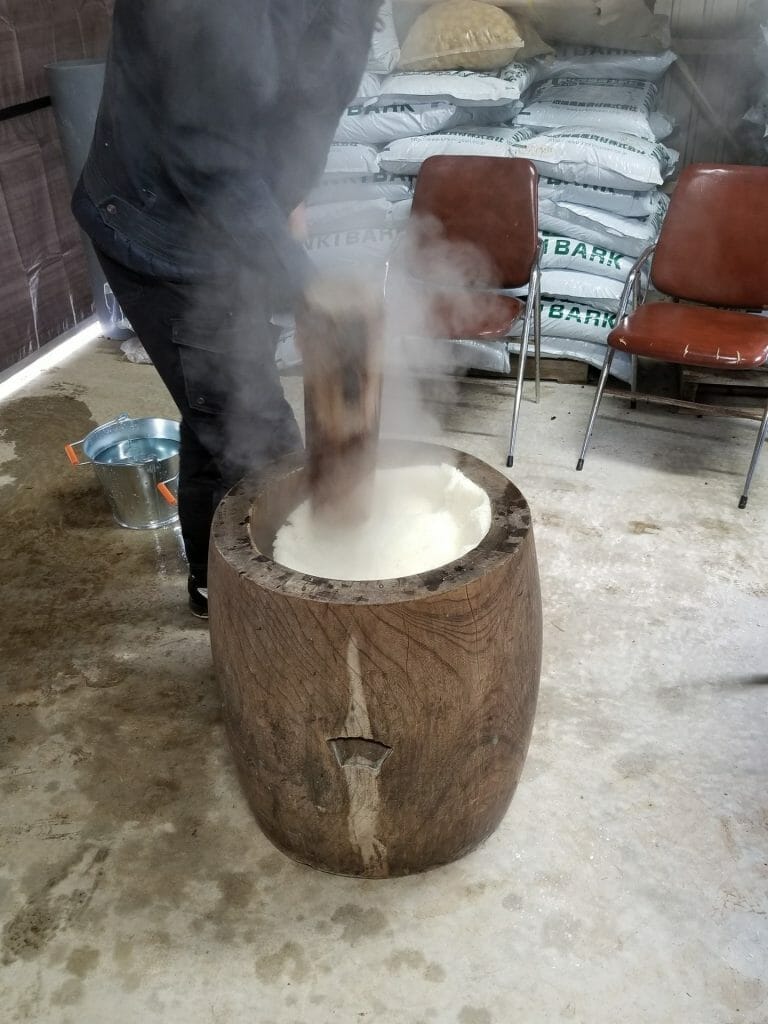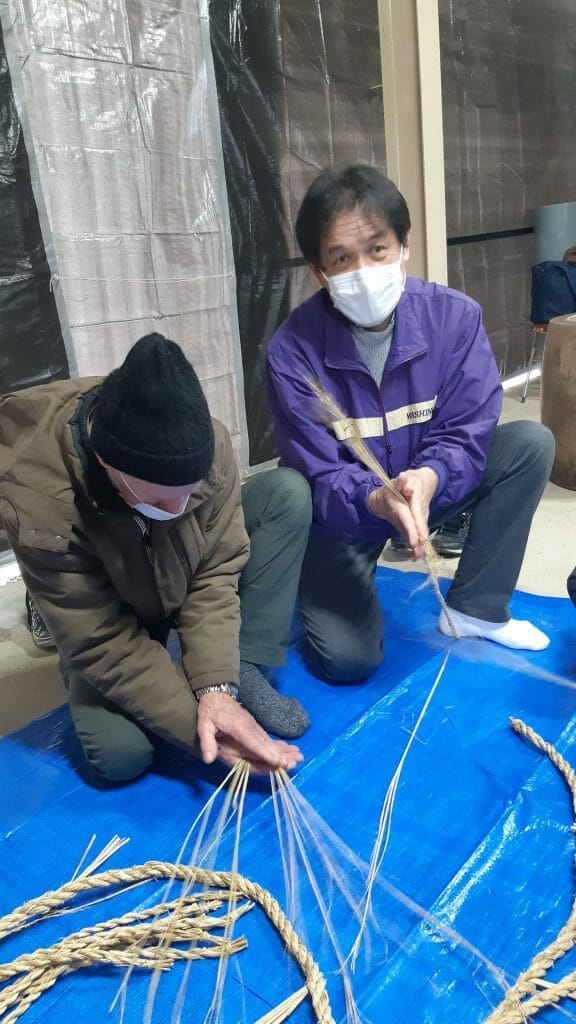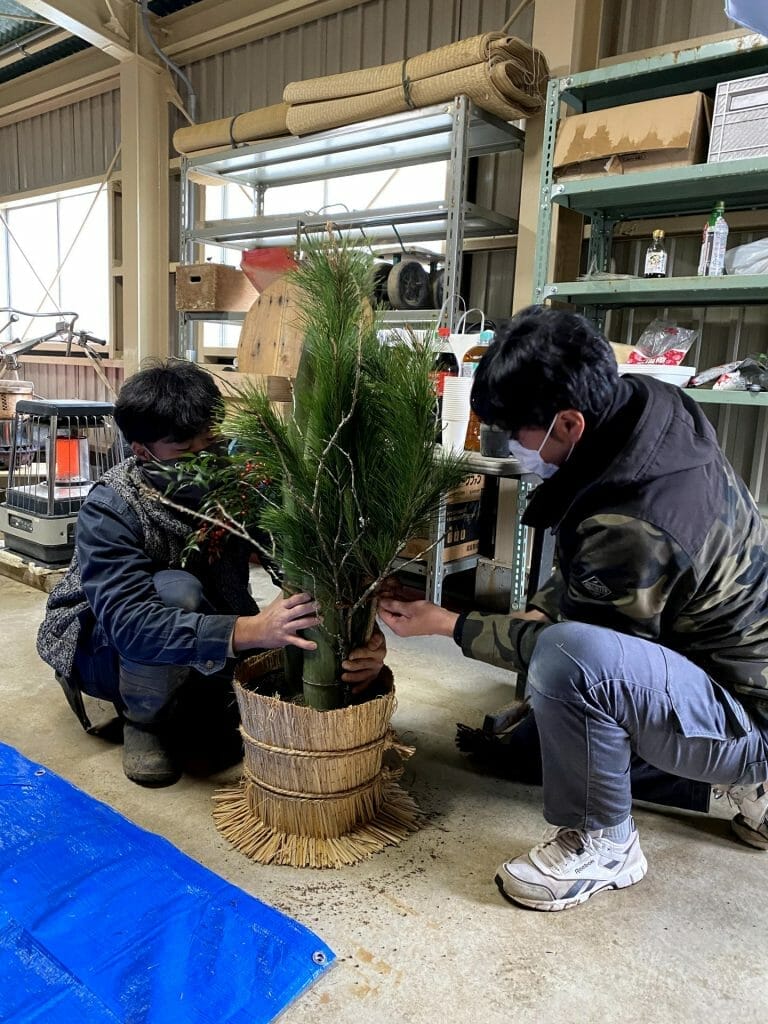Traditional Japanese New Year Celebrations

There are a number of celebrations in the Japanese annual calendar but for most people the New year celebration is the most important. There are various preparations and events that have traditional meanings. It all starts in the days or weeks leading up to January 1st and continues on through the first week of January. I will attempt to explain some of the traditional meanings behind the preparations that happen before New Year’s Day.
First however, let me talk a little about my home country England. In British culture there is an old tradition of ‘Spring Cleaning’. It is a time of ‘new beginnings’ at the end of the cold dark winter. Opening all the windows, letting the fresh air in, airing out winter bedding and cleaning out all the dust are some of the undertakings. It’s a kind of ‘throwing off’ of the dark old things and opening the door to the bright new things of Spring.
In Japan, New Year is the time where a similar symbol is established but with a more ceremonial or religious ideology. In the days before New Year, all business dealings are completed, houses are cleaned and any ‘loose ends’ are taken care of, as far as possible, giving rise to the nickname of December as the ‘running’ month, a very busy time for most people. The goal is to prepare the way to receive ‘Toshi-gami’ who is the god of the new year as well as the god of harvest. This deity brings prosperity, protection and blessings for the coming year, as well as a good harvest upon which everyone depended, and as such needs to be received with homage, respect and honor.
Preparations to receive the deity Toshi-gami, include the following activities.
Mochi Tsuki

Mochi is a different type of rice, which after cooking, if pounded gains a hard consistency that can be molded into different shapes and kept for many days. Mochi is eaten regularly by many people, but the mochi at this time is used to make ‘kagami mochi’, special cakes made as part of the ‘spirit dwelling’ for Toshi-gami during his ‘stay’ at the household.
Shime Nawa


Shime nawa is at first glance a kind of ‘greeting banner’ made to announce to Tosh-gami that the household is ready to receive him. But it has a much deeper significance than that. It is considered to be the border between the physical and spiritual or holy realm. That’s why everything within the boundary of the Shime Nawa is considered to be holy or sanctified. You can find it being used in many ceremonial situations. The shime nawa is a rope of rice straw made by hand, into which certain decorative elements using leaves and paper are placed. For New Year it is hung over the doorway of the house, office, temple etc.
Kado Matsu

The kado matsu is a decorated stand usually placed below either end of the shime nawa as part of the honor shown to Toshi-gami at his arrival. The ‘ingredients’ for the kado matsu include pine, bamboo and a budding branch from a plum tree. The pine is an evergreen a symbol of continuing life. The bamboo grows very quickly again a symbol of life. The plum is the first tree to bud in Japan each year so it is a symbol of new life each spring.
Osechi
At the beginning of the new year there are different events outside the house that should be attended by everyone, so to eliminate the need for daily cooking, everything is prepared in advance with foods that will not sour very quickly. One of the ingredients for the Osechi is black soybeans, for which Sasayama is famous. For the first three days of the New Year many people eat Osechi.
More details about preparations
Traditionally, many of the New Year preparations are done together in either family or community activities. I was invited to attend such an activity, setup to demonstrate to visitors how these traditional activities are done. Please see the enclosed photos.
Mochi Tsuki. First, the rice was cooked and then placed into a large type of ‘mortar and pestle’ to pound the rice. This requires two people, one who hammers with a wooden mallet and one who folds in the mochi. This can become a demonstration of coordinated speed and skill as the ‘folder’ jumps in and folds the rice between hammer strokes. For us beginners it was definitely not a demonstration of either! Once the mochi has been pounded it is molded into spherical shapes similar to a snowman. Two of these, one large and one small, are placed on top of a ceremonial stand for the kagami mochi.
The Kagami mochi will be the spirit ‘dwelling place’ for Toshi-gami once he enters the house. The word ‘kagami’ means mirror and in traditional Shinto belief, mirrors are the dwelling place of the spirits. Thus, the kagami mochi becomes the dwelling place for the visiting deity. Other parts of the kagami mochi include the Daidai, a Japanese orange fruit placed on top of the mochi. Some Urajiro fern leaves, whose face and reverse side are the same color, symbolizing honesty or a lack of ‘two faces’. Some kombu, a type of seaweed. It’s meaning is a play on Japanese words, as the word ‘yorokobu’, means to rejoice or celebrate. So, the word play is yoro-‘kombu’. To rejoice or show thankfulness. The base of the kagami mochi is the Sambo, or holy stand, to give the deity his ‘seat of honor’.
Usually arranged in front of or on the kagami mochi, is a row of dried persimmons. Again, there is a play on words here. There are usually ten persimmons on a stick, which take on the following meaning.
The first and last two persimmons: the word two in Japanese is ‘ni’, which is then combined with the article ‘ko’, or ‘of’ in English, meaning two of something. ‘Niko’, also coincides with the Japanese word smile.
In between these ‘smiles’ are six persimmons, the Japanese word for quantitative six is ‘mutsu’. This is combined with ‘majii’, together they coincide with the Japanese word for ‘good relationships’ which is ‘mutsumajii’.
If we put those ideas together as a type of wish or desire for the coming year, to start and end with smiles and have good relationships in between. A good wish indeed!
Those are some of the things I learned along the way as we were preparing the different new year decorations. We also enjoyed eating some of the mochi and ‘sembe’ or rice crackers, cooked over the kerosine stove. It was a fun event and gave meaning to a lot of the new year traditions that we see here in Japan. I hope you get to enjoy some of the same experiences.














